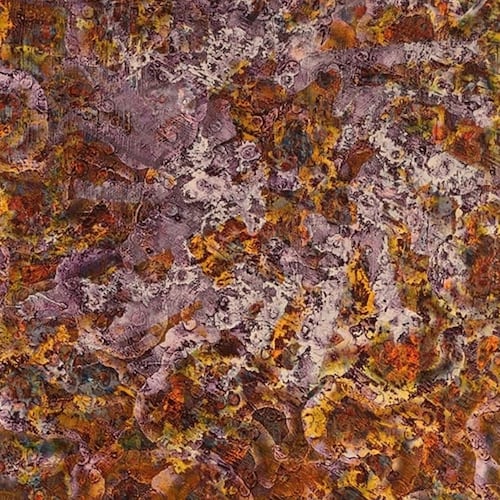Denise Kiernan’s “The Last Castle” is a diligent chronicle of George Vanderbilt’s Biltmore House, where Gilded Age wealth commingled with the visions of America’s high bohemia in the western hills of North Carolina.
In the 1880s, Asheville, N.C., was a resort town that had a reputation for its so-called “breathing porches.” Indeed, George had first come from New York to experience the area’s restorative airs with his mother, who was recovering from malaria. Soon, he yielded to the lofty charms of Mount Pisgah — what youngster has not — and he would begin secretly assembling parcels of land for his grand scheme, the Biltmore project.
A pharaonic endeavor, the Asheville castle took six years to complete. It was an impressive design team: Richard Morris Hunt, George’s “architectural north star,” had been the first American admitted to the Ecole des Beaux-Arts in Paris; and Frederick Law Olmsted, who had laid out the grounds of Central Park, completed in 1857. (Contemporaneously with this North Carolina venture, Olmstead was also designing Druid Hills, the Atlanta suburb.)
They were busy, older men, often at cross-purposes, but George kept them in line long enough to build what remains the largest private residence in the United States. The Biltmore House has a four-acre “footprint” with 250 rooms. At its grandest extent of 125,000 acres, the estate was geographically larger than 17 of the today’s smallest countries.
Most interesting were the forward-looking innovations: Otis elevators; the mechanical refrigeration systems; the famous 70,000-gallon indoor swimming pool. George wired the building with both AC and DC current, all controlled by a gigantic electrical panel located in the basement, Kiernan’s favorite floor of the manse. With its oversize switches and meters, it’s a steam-punk spectacle alone worth the price of admission.
Olmsted wanted his landscaping to have “caprice,” and so it does, the placement of trees and “water features” deliberately imperfect. He also persuaded George to accept ideas of “scientific and sustainable forestry.” It wasn’t long before he embraced the practical concept of the Biltmore as a “working estate.”
To make this real, the team brought in Gifford Pinchot, later the first Chief of the United States Forest Service. At Biltmore, Pinchot and his successor established the first school of forestry in the United States. Further, the extraordinary estate manager, Chauncey Beadle, sowed millions of plants, mainly indigenous, over his 60-year tenure.
“The Last Castle’s” heroic figure is Edith Stuyvesant Dresser, a descendant of Peter Stuyvesant. Her marriage to George in 1897 was a successful double-Dutch union. Together, their creative lives emphasized the fin de siècle modernities that were floating in the air over a century ago: early environmentalism; feminist emancipation; town planning schemes that were at once utopian and feudal.
With Edith’s support, Biltmore Estate Industries produced hand-woven textiles that became highly valued in the early 20th century’s world fashion centers. The Arts and Crafts movement, which had been led by the socialist and designer William Morris, favored handcrafted wares over machine-made goods. The pleasing historical irony is that Edith’s “socially progressive” ventures apparently did not present a contradiction for her husband, whose fortune had been derived from a brute robber baron ancestry that helped to create the anathematic Industrial Age.
Within a decade of its completion, the Biltmore was in financial straits, thus challenging its original concept of self-sustainability. The crisis deepened after George’s sudden death in 1914. Edith was forced to sell off land, timber rights, and even Biltmore Estate Industries, in order to keep the show going. Whereas a visit to Biltmore had once required an exclusive invitation, it was opened to the public in 1930, earning $64,000 in its first year — enough to pay the county’s tax bill.
The most mysterious character in “The Last Castle” is Cornelia, George and Edith’s sole offspring. Raised in egalitarian fashion with children of the estate workers, she was very much a part of her mother’s artistic universe.
But as a young woman, for reasons unclear, she became estranged from her Carolina lifestyle and divorced her husband, a British diplomat, who continued to live at the Biltmore on a stipend for the remainder of his earthly passage. The charitable Cornelia then assumed the name “Nilcha,” involved herself in a peccadillo with a Swiss artist, and ended her days in an unmarked grave in the Orkney Islands, having eschewed the automobile in favor of flat-bottomed skiffs propelled by pole power.
This is fantastic stuff, and the reader can tell that Kiernan is doing all she can to tease the weirdness out of this epic Asheville opera. Her task was probably easier in the her lively previous book, “The Girls of Atomic City,” where many of the women who took part in the Manhattan Project at Oak Ridge, Tenn., were still alive and could be deposed directly by the author. Nevertheless, “The Last Castle” is a fine primer if you’re planning a visit; it’s stuffed with Biltmore trivia, which you can hurl at the know-it-alls parading around on the tour, snoots held high.
A steward of the land, George Vanderbilt was reminiscent of the royal line stretching from Montaigne to Jefferson. What, then, would impel such a cultivated, often withdrawn, person to erect the kind of world-dominating citadel one might expect from a megalomaniac like William Randolph Hearst, the newspaper titan who built his own (smaller) castle in California 20 years later?
Put to Denise Kiernan at a recent public appearance, she responded that “[Architect] Hunt was concerned about scale and wanted to make sure the house could hold its own against the backdrop — you know, the backdrop was the Blue Ridge Mountains — and it just started to get just a little bit carried away.”
NONFICTION
‘The Last Castle: The Epic Story of Love, Loss, and American Royalty in the Nation’s Largest Home’
by Denise Kiernan
Touchstone
400 pages, $28
About the Author
Keep Reading
The Latest
Featured

